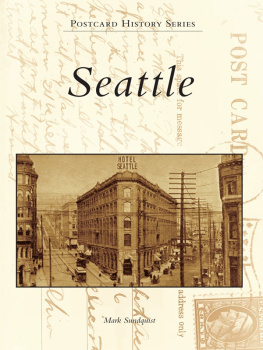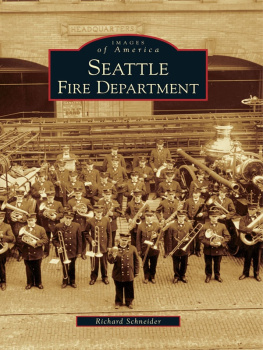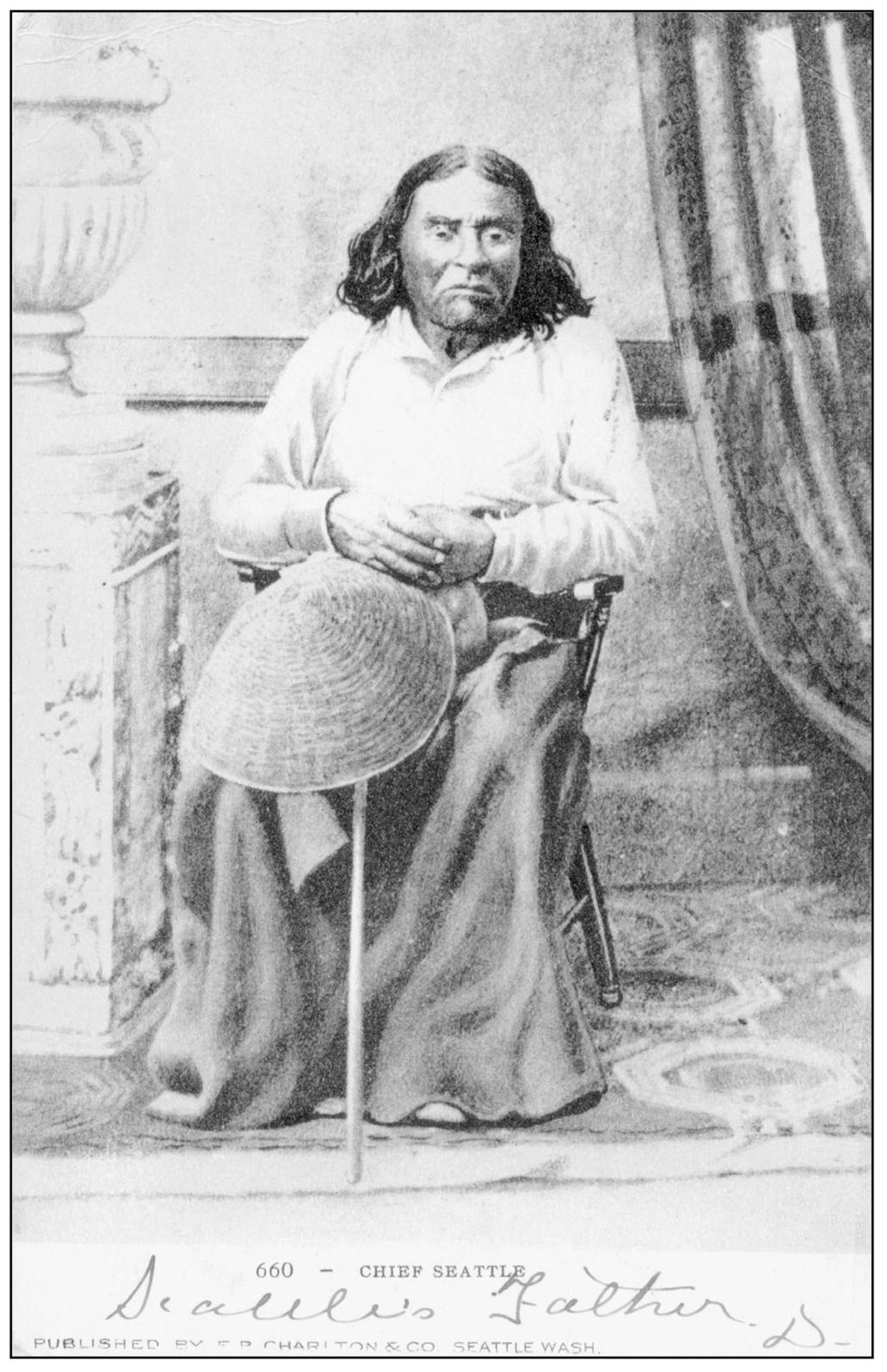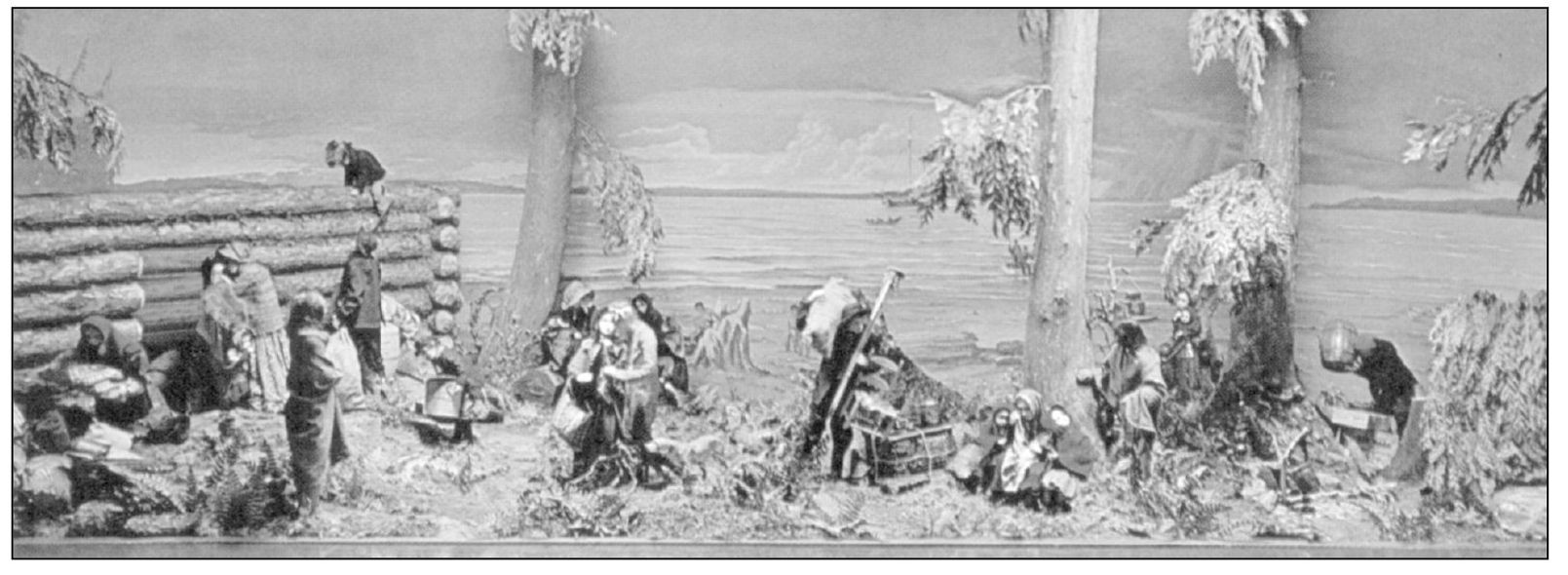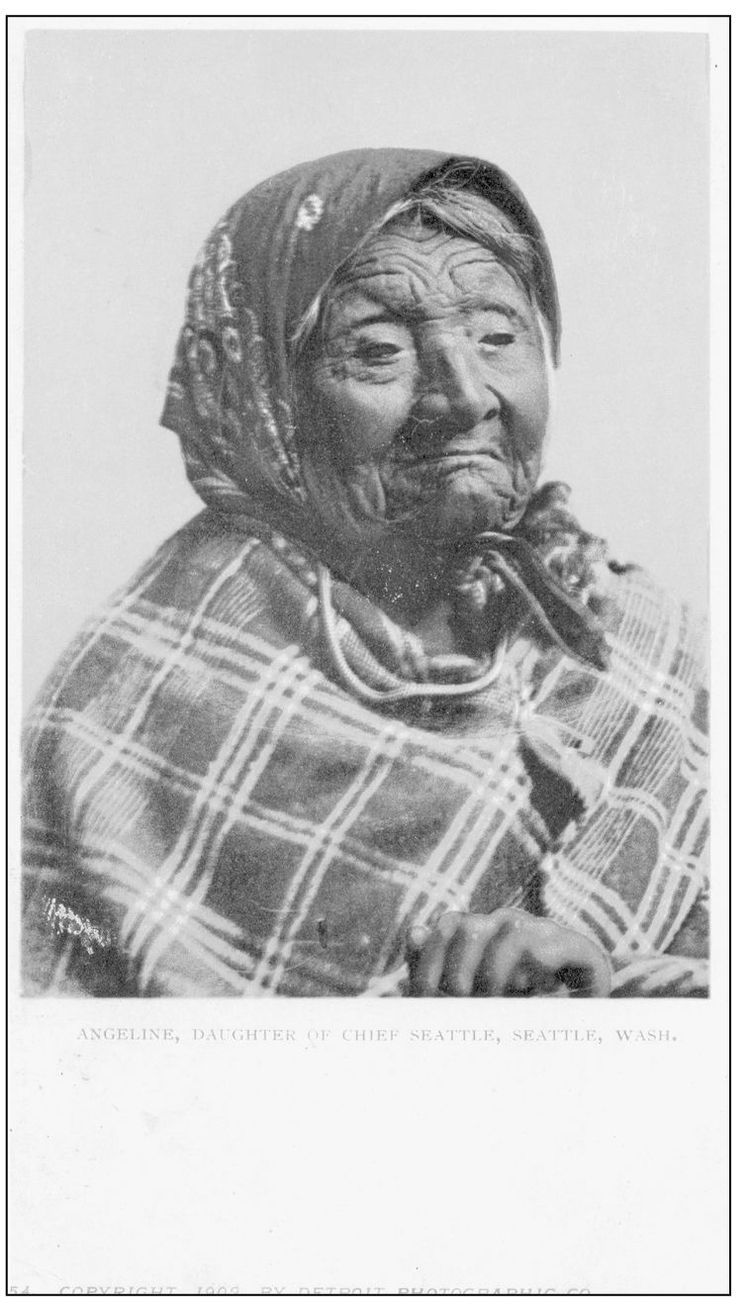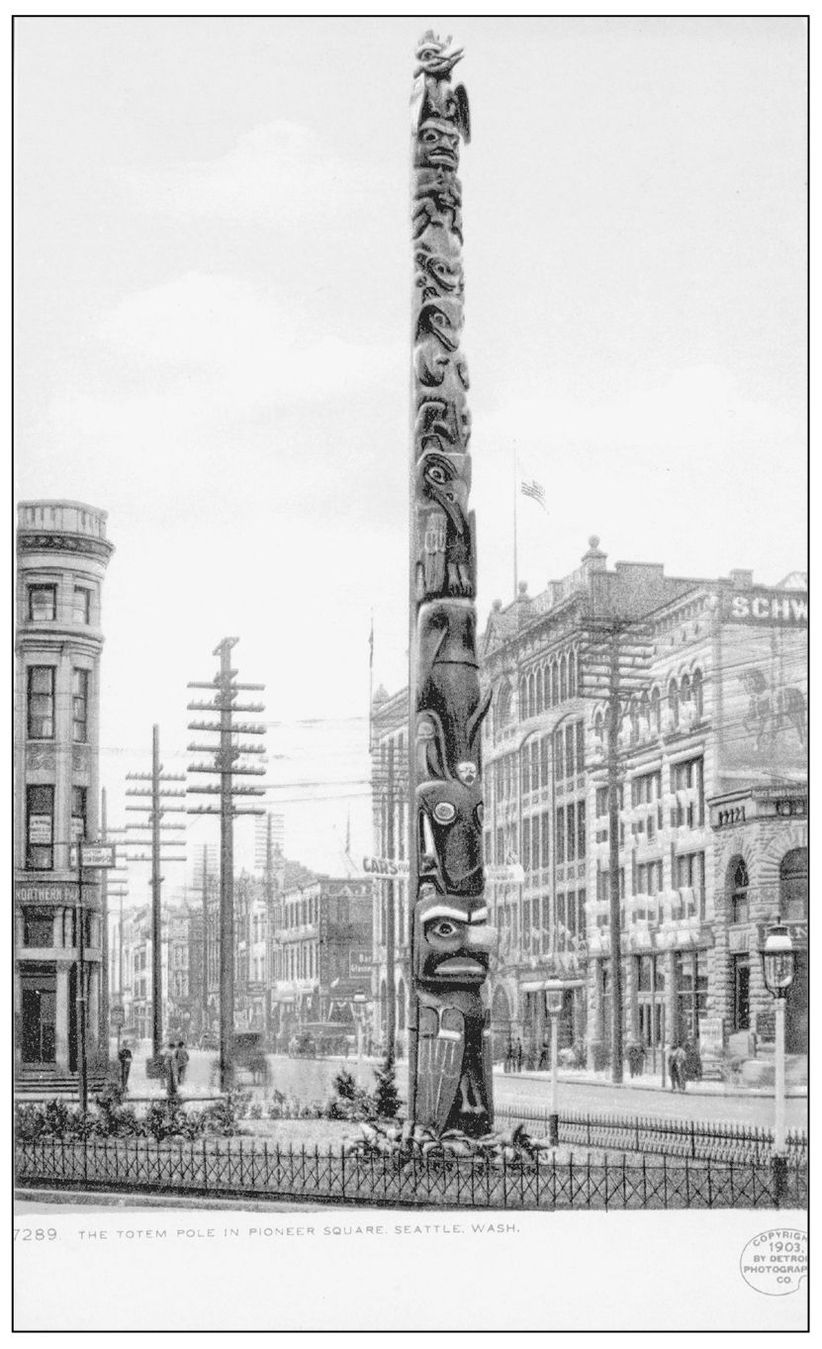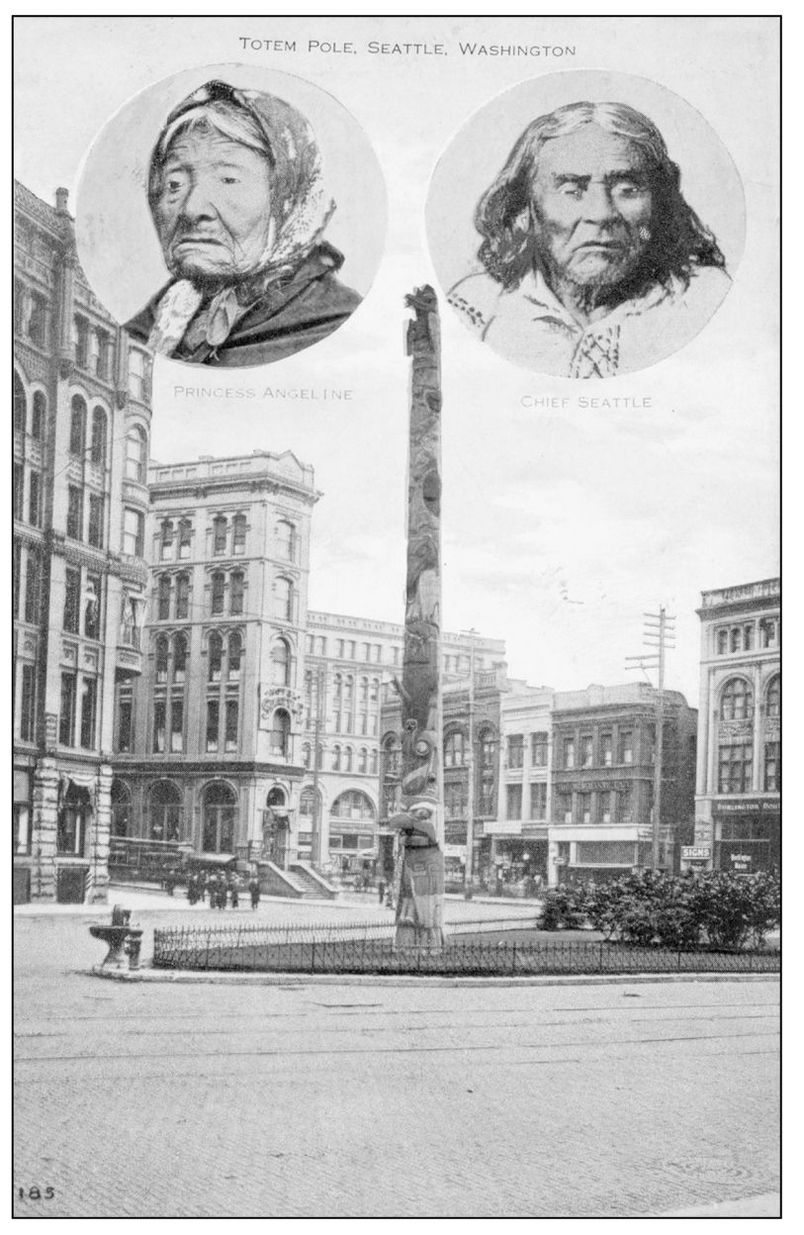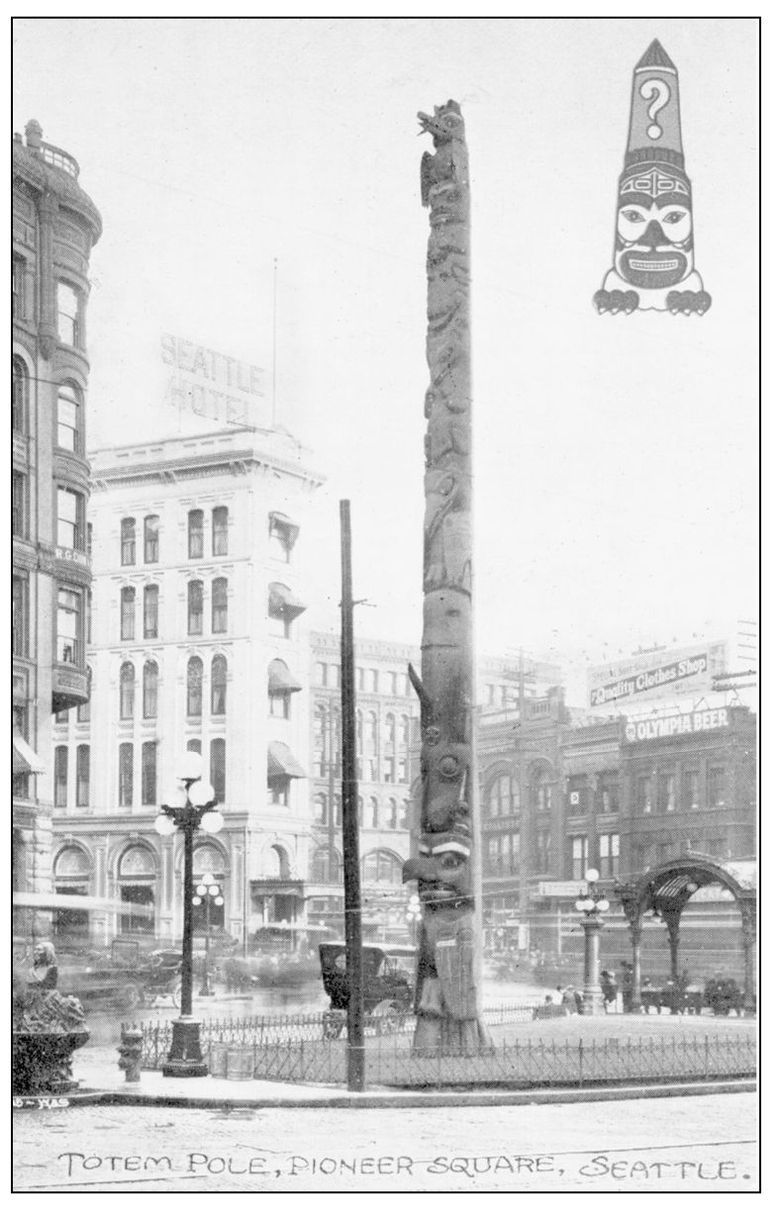One
SEATTLES NATIVE AMERICAN HERITAGE
Any history of Seattle would be incomplete without acknowledging the important role that local Native Americans played in the citys history. Their contribution went far beyond the use of a local Native American chief s name for the city. When Seattles original settlers, the Denny Party, landed on Alki Point in West Seattle on November 13, 1851, they were greeted by a group of Native Americans led by Chief Seattle himself. The natives were friendly and hospitable, and assisted the settlers in getting established. In early 1852, when the pioneers relocated across Elliott Bay, where the beachfront was better suited for a deepwater port, helpful natives again assisted. When Seattle pioneer Doc Maynard moved from Olympia to Seattle in early 1852, it was his friend Chief Seattle who paddled him up Puget Sound in his own canoe. Native laborers helped build Doc Maynards store and operate Henry Yeslers saw mill. When the brief Indian War of 1856 broke out, the Puget Sound natives under Chief Seattles control resolved to remain on peaceful terms with the settlers, and some historians claim that it was neighborly Native Americans who warned the villages residents of the impending danger.
After the Alaska Gold Rush began in 1897, all things Alaskan became the rage in Seattle, including Native American artifacts of Alaska and the northwest coast of British Columbia. The native art of the Far North became closely intermingled with that of Puget Sound. Perhaps nowhere is the regions Native American heritage more pronounced than in the many geographic names of Puget Sound Indian origin. The Native American word mish means people, and so the region has the Duwamish River, the Snohomish River, the town of Skykomish, the Stillaguamish River, Lake Sammamish, and so on. Kitsap County, the county directly across Puget Sound from Seattle, is named for Chief Kitsap, leader of the Suquamish tribe in the early 1800s. Other local names of Native American origin include Puyallup, Issaquah, Mukilteo, Tacoma, Snoqualmie, Chehalis, and Nisqually, to name a few. The permanence of geographic names provides assurance that the regions Native American legacy will never be lost completely.
CHIEF SEATTLE. This is the only known photograph of Chief Seattle. It was taken around 1865 by E. M. Sammis, Seattles first photographer. Chief Seattle died in 1866. The image has often been touched up to make his eyes appear open, though his eyes are closed in the original photograph. Some reproductions include designs added to Chief Seattles clothing and hat, and colorized reproductions show the chief wearing a wide variety of clothing colors. Some reproductions also place him in a variety of backgrounds. (Courtesy authors collection.)
DENNY PARTY LANDING. This diorama of the Denny Party landing at Alki in West Seattle on November 13, 1851, is on display at Seattles Museum of History and Industry. It was carefully constructed from pioneer accounts. A group of welcoming Native Americans led by Chief Seattle himself greets the new arrivals. Chief Seattle is in the left center foreground. (Courtesy authors collection.)
PRINCESS ANGELINE. Kikisoblu, or Princess Angeline, as she was nicknamed by early Seattle residents, was Chief Seattles daughter. She was a beloved figure among early Seattle residents and close friends with Seattles pioneers. When postcards became popular around the turn of the century, images of Princess Angeline were as popular as those of Chief Seattle. Angeline died on May 31, 1896. (Courtesy authors collection.)
PIONEER SQUARE TOTEM POLE, 1903. In 1899, a Tlingit totem pole was removed under suspicious circumstances from a Tlingit village on Tongass Island, Alaska, by a Seattle Chamber of Commerce expedition and installed in Seattles Pioneer Square. Despite the questionable conditions surrounding the totem poles acquisition, it immediately became a source of civic pride, a symbol of Seattle, and a reflection of Alaskan influence in Seattle during the Gold Rush. (Courtesy authors collection.)
PIONEER SQUARE TOTEM POLE, C . 1909. This image has Chief Seattle and Princess Angeline superimposed next to the Tlingit totem pole in Pioneer Square. Images like this created an association in the publics mind between Puget Sound Indians, Seattle, and totem poles. However, Puget Sound Indians did not traditionally carve totem poles. The Pioneer Square totem pole was Seattles first. (Courtesy authors collection.)
PIONEER SQUARE TOTEM POLE, 1912. This Golden Potlatch postcard reflects three separate Native American influences. The logo of the Golden Potlatch community celebration is in the upper right corner, the Pioneer Square totem pole is in the center, and the bronze drinking fountain topped with the bust of Chief Seattle is in the lower left corner. The drinking fountain and bust were cast by famed Seattle sculptor James Wehn. (Courtesy authors collection.)
CHRISTMAS GREETING POSTCARD, 1906. The holly surrounding the numbers indicate this was a holiday greeting card from Seattle. Included in the Seattle area scenes are the Pioneer Square totem pole and Princess Angeline. (Courtesy authors collection.)

